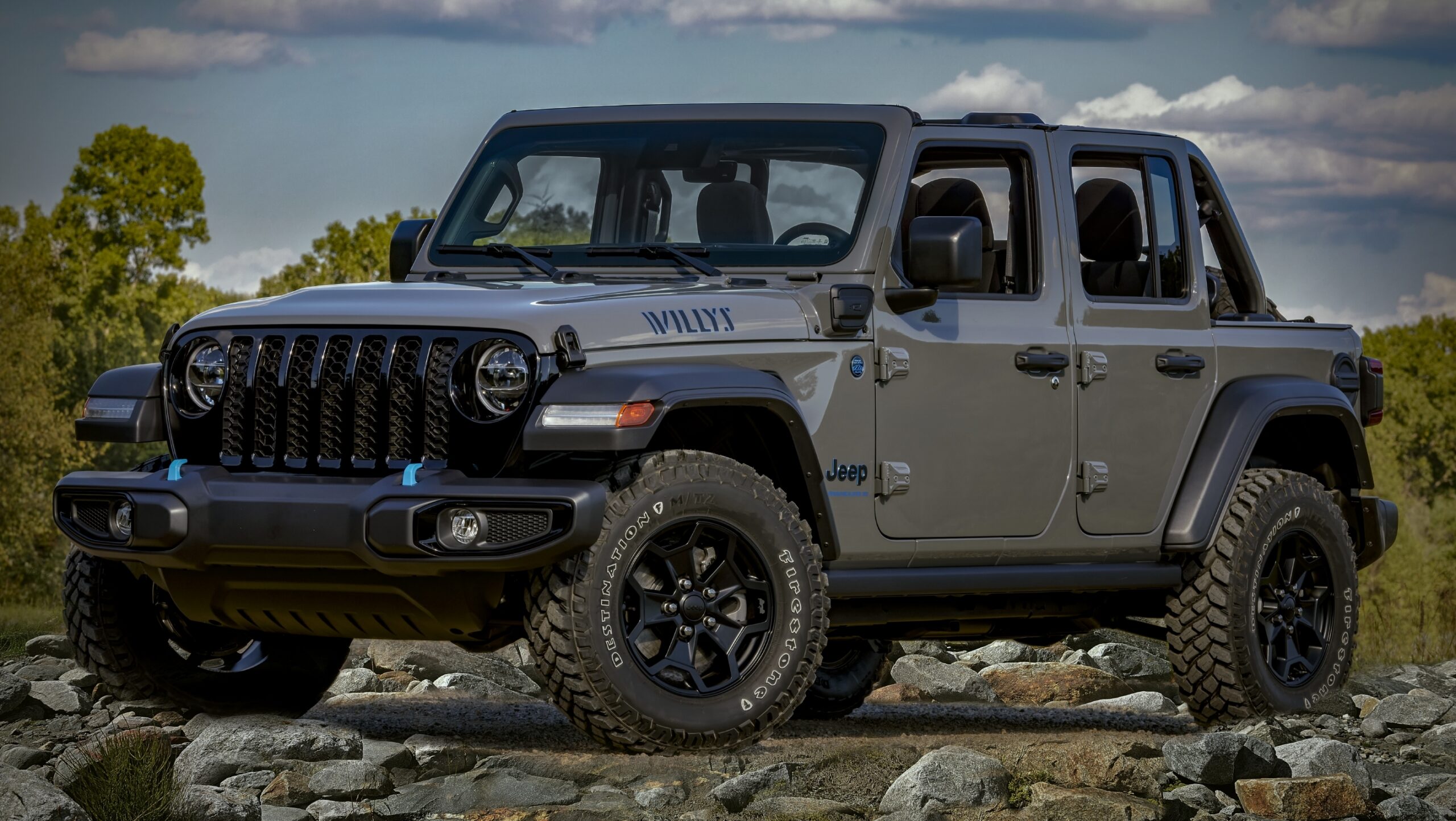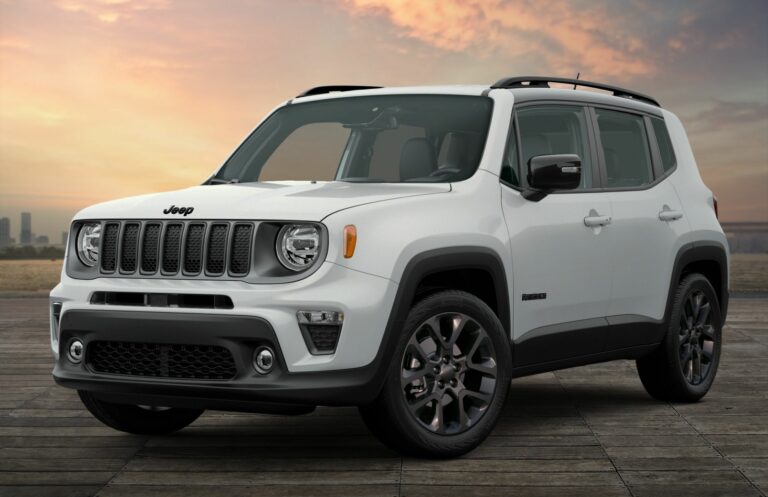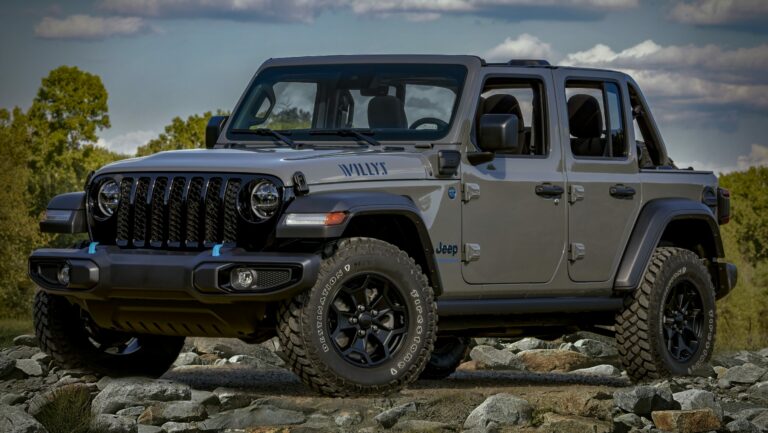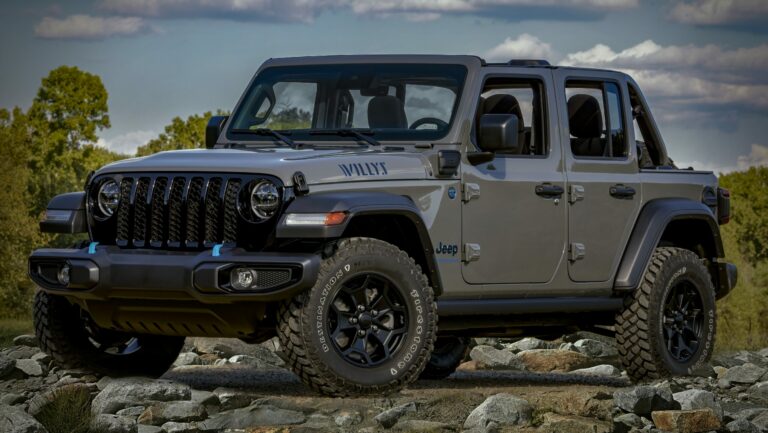Jeep Cherokee 2013: The End of an Era (KK Generation)
Jeep Cherokee 2013: The End of an Era (KK Generation) jeeps.truckstrend.com
Introduction: Defining the 2013 Jeep Cherokee
The year 2013 marked a significant turning point for the Jeep Cherokee nameplate, though perhaps not in the way many immediately recall. While the radical, polarizing new-generation (KL) Cherokee debuted for the 2014 model year, the "Jeep Cherokee 2013" specifically refers to the final iteration of the KK generation, known as the Jeep Liberty in North America. This article focuses on this specific 2013 model, which represents the culmination of a more traditional, rugged mid-size SUV design before Jeep’s dramatic shift towards car-based crossovers.
Jeep Cherokee 2013: The End of an Era (KK Generation)
The 2013 Jeep Cherokee (KK) was a continuation of a lineage that prioritized off-road capability and utility within a manageable footprint. It was less about sleek lines and fuel efficiency, and more about robust construction and proven mechanicals. For many Jeep enthusiasts, it represented the last bastion of a certain philosophy before the brand fully embraced modern, on-road comfort. Understanding this vehicle means appreciating its blend of traditional SUV characteristics with the refinements of its final production year. Whether you’re a potential buyer, an existing owner, or simply a curious automotive enthusiast, delving into the 2013 Jeep Cherokee (KK) offers insights into a pivotal moment in Jeep’s storied history.
I. A Familiar Face: Design and Platform
The 2013 Jeep Cherokee (Liberty) maintained the design language established by the KK generation in 2008. Eschewing the rounded, somewhat futuristic lines of its predecessor (the KJ generation), the KK adopted a more squared-off, muscular aesthetic. It featured Jeep’s signature seven-slot grille, prominent trapezoidal wheel arches, and a tailgate-mounted spare tire (though this was relocated to under the vehicle for the 2012 model year onwards for better visibility and cargo access). The overall look was distinctly "Jeep," projecting an image of ruggedness and capability.
Underneath its familiar exterior, the 2013 Cherokee was built on a unibody platform, derived from its KJ predecessor. While not a body-on-frame design, it was engineered with robust components to withstand the rigors of off-road driving, setting it apart from many contemporary compact and mid-size crossovers. Its independent front suspension and five-link solid rear axle provided a good balance between on-road comfort and off-road articulation. The platform allowed for respectable ground clearance and the integration of advanced 4×4 systems, cementing its status as a genuine SUV rather than a softened crossover. This design philosophy contributed to its solid, planted feel, albeit at the expense of car-like agility and fuel economy.
II. Powertrain and Performance
For the 2013 model year, simplicity was key in the Cherokee’s powertrain offerings, especially in North America.

Engine: The sole engine option was the venerable 3.7-liter SOHC V6 engine.
- Specifications: This engine produced 210 horsepower at 5,200 rpm and 235 lb-ft of torque at 4,000 rpm. While not a powerhouse by modern standards, it delivered sufficient power for daily driving, highway cruising, and light towing duties. Its reputation was built on reliability and durability, a common trait for many Chrysler/Jeep engines of that era.
- Fuel Economy: Fuel efficiency was not the 3.7L V6’s strong suit. Expect EPA ratings around 16 MPG city / 22 MPG highway for 2WD models and slightly less for 4WD versions. This was a trade-off for its robust construction and capability.

-
Transmission: The 3.7L V6 was paired exclusively with a four-speed automatic transmission.
- This transmission was known for its robustness and straightforward operation. While lacking the numerous gears found in modern transmissions, its simplicity often translated to fewer complex issues. Shifts could be noticeable but were generally smooth and predictable. It was well-matched to the V6’s torque curve, providing adequate acceleration and confident highway passing.

-
Drivetrain: The 2013 Jeep Cherokee (Liberty) offered versatile drivetrain options to cater to various needs.
- Rear-Wheel Drive (RWD): Standard on base models, offering traditional SUV dynamics and improved fuel economy.
- Command-Trac II® 4WD: A part-time 4×4 system with a 2-speed transfer case (2WD, 4WD High, 4WD Low). Ideal for off-road enthusiasts who primarily drive on pavement but need robust four-wheel drive for challenging conditions. It is not designed for use on dry paved roads in 4WD mode.
- Selec-Trac II® 4WD: An active full-time 4×4 system, also with a 2-speed transfer case (2WD, 4WD Auto, 4WD Low, 4WD Lock). This system could automatically send power to the wheels with the most traction, making it suitable for varying road conditions, including snow, ice, and light off-roading, without requiring the driver to switch modes.
III. Trim Levels and Key Features
In North America, the 2013 Jeep Cherokee (Liberty) was typically available in two primary trim levels, offering a range of features to suit different preferences and budgets.
-
Sport: The entry-level trim, the Sport focused on functionality and value.
- Exterior: Came with 16-inch steel wheels (optional alloys), black side mirrors and door handles, and manual-folding mirrors.
- Interior: Cloth seating, manual climate control, power windows and locks, a basic AM/FM/CD/MP3 stereo with auxiliary input, and steering wheel-mounted audio controls.
- Practicality: Retained the robust mechanicals and available 4×4 systems of higher trims, making it a capable base for those prioritizing utility over luxury.
-
Limited: The more upscale trim, the Limited added comfort, convenience, and aesthetic upgrades.
- Exterior: Featured 17-inch aluminum wheels (optional 18-inch), body-color mirrors and door handles, chrome accents, and fog lights.
- Interior: Upgraded cloth or optional leather upholstery, power-adjustable driver’s seat, automatic climate control, an available Uconnect infotainment system with navigation and a touchscreen, heated front seats, and an available premium audio system.
- Comfort & Convenience: Keyless entry, cruise control, a universal garage door opener, and a rear cargo cover were standard or available.
-
Interior Design and Utility: The interior of the 2013 Cherokee (Liberty) was functional and straightforward. Hard plastics were prevalent, reflecting its utilitarian nature, but build quality was generally solid. The cabin offered decent passenger space for a mid-size SUV, and the rear seats could fold flat, providing a respectable 64.6 cubic feet of cargo volume. Its elevated seating position provided good visibility, a hallmark of traditional SUVs.
-
Safety Features: Standard safety equipment included electronic stability control, traction control, anti-lock brakes (ABS), electronic roll mitigation, and a full complement of airbags (front, side-curtain). Rear park assist was available on higher trims.
IV. Driving Dynamics and Off-Road Capability
The 2013 Jeep Cherokee (Liberty) offered a distinct driving experience that set it apart from the growing number of car-based crossovers.
-
On-Road: On pavement, the Cherokee provided a relatively comfortable ride, though it leaned towards the firmer side due to its robust suspension. It absorbed road imperfections adequately, making it suitable for daily commuting and highway travel. Steering was responsive for an SUV of its type, but it exhibited more body roll in corners compared to lower-slung vehicles. Visibility was generally good thanks to its upright stance and large windows. While not a performance vehicle, its 3.7L V6 provided adequate power for most situations, and the 4-speed automatic, while old-school, delivered dependable shifts.
-
Off-Road: This is where the 2013 Cherokee truly shone for its segment.
- Ground Clearance: With 7.9 inches of ground clearance (8.0 inches for 4×4 models), it could navigate most unpaved trails without scraping its underbelly.
- Approach/Departure Angles: Respectable angles allowed it to tackle moderate obstacles without issue.
- 4×4 Systems: The available Command-Trac II and Selec-Trac II 4×4 systems, especially with their low-range gearing, provided genuine off-road prowess. The low-range allowed for increased torque and control in challenging situations like rock crawling or steep climbs.
- Towing Capacity: Properly equipped, the 2013 Cherokee (Liberty) could tow up to 5,000 pounds, making it a capable choice for small trailers, boats, or campers, a significant advantage over many crossovers.
- While not as extreme as a Wrangler, the 2013 Cherokee (Liberty) was significantly more capable off-road than most of its direct competitors, offering a good balance of everyday usability and weekend adventure potential.
V. Common Issues and Maintenance Tips
As a vehicle nearing a decade and a half old, potential buyers and current owners of a 2013 Jeep Cherokee (KK) should be aware of common issues and essential maintenance.
-
Engine (3.7L V6): Generally reliable, but common issues can include:
- Oil leaks: Especially from the valve covers or oil pan.
- Exhaust manifold bolts: Prone to breaking, leading to exhaust leaks and ticking noises.
- Crankshaft position sensor: Can fail, causing stalling or no-start conditions.
- Regular oil changes: Crucial for longevity.
-
Transmission (4-speed automatic):
- Fluid leaks: Check the pan gasket and lines.
- Harsh shifts or slipping: Could indicate low fluid, worn clutches, or a failing solenoid. Regular transmission fluid and filter changes are vital for this unit.
-
Suspension and Steering:
- Ball joints and tie rod ends: Common wear items, leading to clunking noises or loose steering.
- Control arm bushings: Can wear out, causing squeaks or poor handling.
- Shocks/struts: May need replacement at higher mileages for optimal ride quality.
-
Electrical System:
- Power window regulators: Known to fail, especially in older models.
- TIPM (Totally Integrated Power Module): While less common than in some other Chrysler products, a failing TIPM can cause various electrical gremlins.
-
Rust: As with many vehicles of its age, inspect for rust, particularly on the frame components, suspension mounting points, and rocker panels, especially in regions with road salt.
-
Recalls: Always check the VIN for any outstanding recalls. As of its final production year, the 2013 model might have had fewer major recalls than earlier KKs, but it’s always a good practice.
Maintenance Tips:
- Adhere to the maintenance schedule: Pay particular attention to fluid changes (engine oil, transmission fluid, differential fluids, coolant).
- Inspect regularly: Check for fluid leaks, tire wear, brake condition, and suspension component integrity.
- Address issues promptly: Small issues can escalate if ignored.
- Consider a pre-purchase inspection (PPI): If buying used, a qualified mechanic can identify potential problems.
VI. Buying a Used 2013 Jeep Cherokee (KK): What to Look For
Purchasing a used 2013 Jeep Cherokee (Liberty) can be a smart move for those seeking a capable and relatively simple SUV. Here’s what to prioritize during your search:
- Service History: A complete and consistent service record is invaluable. Look for evidence of regular oil changes, transmission fluid services, and routine maintenance.
- Rust Inspection: Thoroughly inspect the undercarriage, frame rails, wheel wells, and rocker panels for rust. This is crucial for older vehicles, especially in northern climates.
- Test Drive:
- Engine: Listen for unusual noises (ticking, knocking), check for smooth idle, and ensure it accelerates without hesitation.
- Transmission: Pay close attention to shifts. They should be firm but not harsh. Listen for any slipping or delayed engagement. Test both forward and reverse gears.
- Brakes: Ensure they feel firm and stop the vehicle smoothly without pulling or grinding.
- Suspension: Drive over bumps and rough roads to listen for clunks, squeaks, or excessive bouncing.
- Steering: Check for excessive play or unusual noises when turning.
- 4×4 System Check (if applicable): If it’s a 4×4 model, ensure all modes (2WD, 4WD High, 4WD Low, 4WD Auto/Lock) engage smoothly without grinding or warning lights. Test in a safe, low-traction environment if possible.
- Electrical Components: Test all lights, power windows, door locks, radio, air conditioning, and dashboard gauges. Check for any illuminated warning lights.
- Interior Condition: Assess the condition of the seats, carpets, and headliner. Look for signs of water leaks or strong odors.
- Tires: Check tire wear and ensure they are evenly worn. Uneven wear can indicate alignment issues or suspension problems.
- Pre-Purchase Inspection (PPI): This is the most critical step. Have an independent mechanic, ideally one familiar with Jeeps, conduct a comprehensive inspection. They can identify issues that might not be apparent to the untrained eye.
VII. Practical Advice and Actionable Insights
- Understand Its Niche: The 2013 Jeep Cherokee (Liberty) is a capable, traditional SUV. It’s not a fuel-sipping, car-like crossover. Embrace its rugged character, but don’t expect the ride quality or fuel economy of a modern unibody vehicle.
- Ideal Use Case: It’s an excellent choice for individuals or families who need light to moderate off-road capability, desire a vehicle with good towing capacity for its size, or appreciate the simpler, more durable mechanics of older vehicles. It’s also a solid option for those who live in areas with harsh winters and require reliable 4×4.
- Budget for Maintenance: While the 3.7L V6 and 4-speed automatic are generally robust, any vehicle of this age will require ongoing maintenance. Factor in potential costs for wear items like suspension components, brakes, and fluid services. Parts are generally affordable and widely available.
- Consider Aftermarket Support: Given its long production run (as the Liberty), there’s a good aftermarket for parts and accessories, which can be beneficial for repairs or modifications.
- DIY Potential: Its relatively simple mechanical design makes it more approachable for DIY enthusiasts to perform basic maintenance and some repairs, potentially saving on labor costs.
Price Table: 2013 Jeep Cherokee (KK Generation)
| Trim Level | Original MSRP (Approx.) | Used Price Range (2023-2024 Est.)* | Engine | Drivetrain Options | Key Features |
|---|---|---|---|---|---|
| Sport | $23,995 – $26,000 | $5,000 – $9,000 | 3.7L V6 | RWD, Command-Trac II 4×4, Selec-Trac II 4×4 (optional) | Cloth seats, 16" steel wheels, Power windows/locks, CD/MP3 stereo, A/C |
| Limited | $28,000 – $31,000 | $6,500 – $11,500 | 3.7L V6 | RWD, Command-Trac II 4×4, Selec-Trac II 4×4 (optional) | Upgraded cloth/leather (opt), 17" alloy wheels, Power driver’s seat, Auto A/C, Uconnect (opt), Fog lights, Chrome accents |
Note: Used prices are highly dependent on mileage, condition, optional features, regional demand, and recent market fluctuations. These are estimates for a vehicle in good, drivable condition as of late 2023/early 2024.
Frequently Asked Questions (FAQ)
Q1: Is the 2013 Jeep Cherokee the same as the Jeep Liberty?
A1: Yes, in North America, the 2013 Jeep Cherokee was sold under the "Jeep Liberty" name. Outside of North America, it was consistently known as the "Jeep Cherokee." Both refer to the KK generation.
Q2: Is the 2013 Jeep Cherokee (KK) good off-road?
A2: Yes, for a mid-size SUV, the 2013 Cherokee (Liberty) is quite capable off-road. Its available 4×4 systems with low-range gearing (Command-Trac II and Selec-Trac II), decent ground clearance, and robust construction make it suitable for moderate trails, snow, and challenging conditions, surpassing most modern crossovers.
Q3: What’s the fuel economy like for the 2013 Cherokee?
A3: Fuel economy is not its strong suit. With the 3.7L V6 and 4-speed automatic, expect around 16 MPG city and 22 MPG highway for 2WD models, and slightly lower for 4×4 versions.
Q4: Is the 3.7L V6 engine reliable?
A4: Generally, yes. The 3.7L V6 is known for its durability and longevity if properly maintained. Common issues are usually minor, such as oil leaks or exhaust manifold bolts, rather than major mechanical failures.
Q5: What is the towing capacity of the 2013 Jeep Cherokee (Liberty)?
A5: When properly equipped with the towing package, the 2013 Jeep Cherokee (Liberty) has a maximum towing capacity of up to 5,000 pounds, which is competitive for its class.
Q6: What are the most common problems to look out for when buying a used 2013 Cherokee (Liberty)?
A6: Key areas to inspect include rust (especially on the undercarriage), transmission fluid leaks or harsh shifts, worn suspension components (ball joints, tie rods), and potential electrical issues like failing power window regulators. Always get a pre-purchase inspection.
Conclusion: A Durable Legacy
The 2013 Jeep Cherokee (KK generation, or Liberty in North America) stands as a testament to a specific era in SUV design. It was the final chapter for a model that prioritized ruggedness, utility, and genuine off-road capability over outright fuel efficiency or car-like driving dynamics. As the last of its kind before Jeep’s dramatic shift with the 2014 KL Cherokee, the 2013 model offers a blend of traditional SUV charm and modern-era conveniences.
Its strengths lie in its robust 3.7L V6 engine, dependable 4-speed automatic transmission, and its highly capable 4×4 systems. For those seeking a vehicle that can confidently tackle unpaved roads, tow a small trailer, or simply handle challenging weather conditions with ease, the 2013 Cherokee (Liberty) remains a compelling used vehicle option. While its fuel economy and interior refinement might not match contemporary crossovers, its durability, relatively simple mechanics, and authentic Jeep character offer a unique and enduring appeal. The 2013 Jeep Cherokee is more than just a car; it’s a rugged, reliable companion ready for the next adventure, representing the end of a beloved era for the iconic nameplate.






